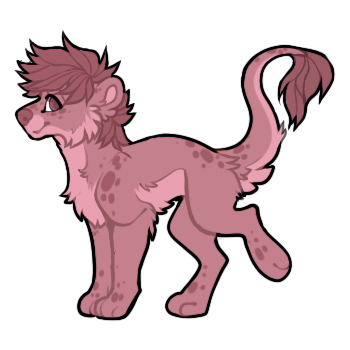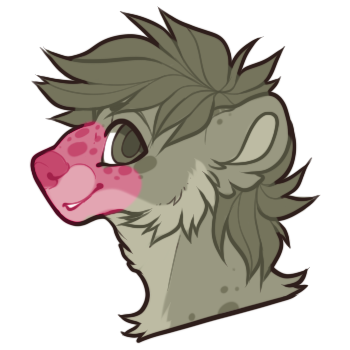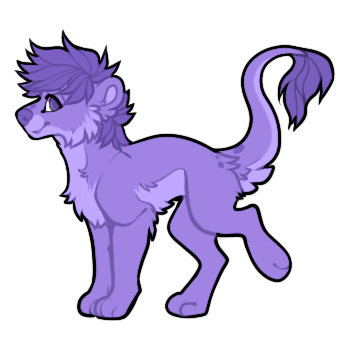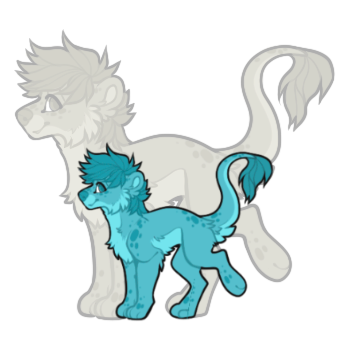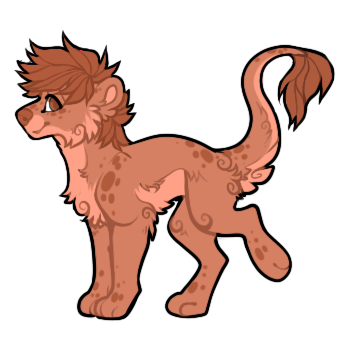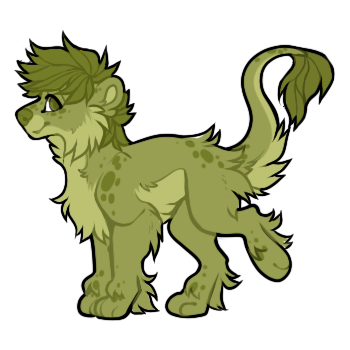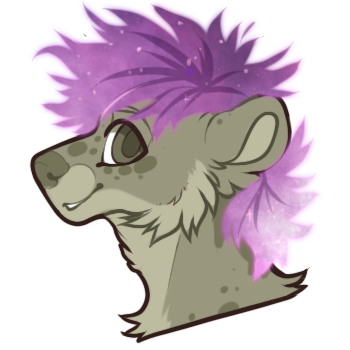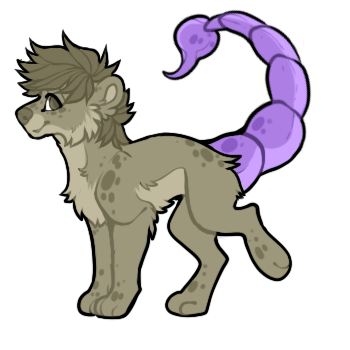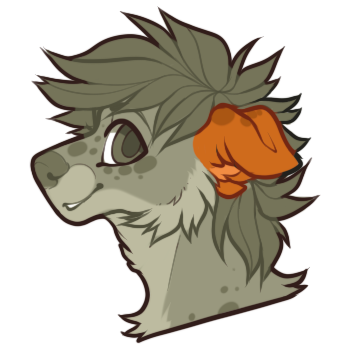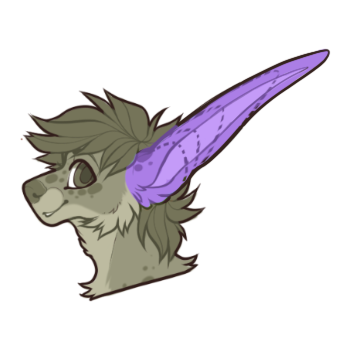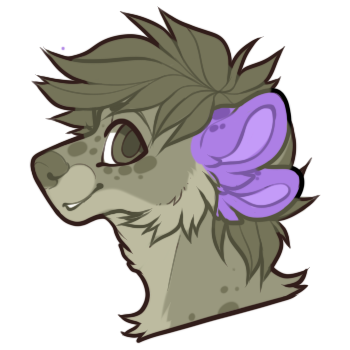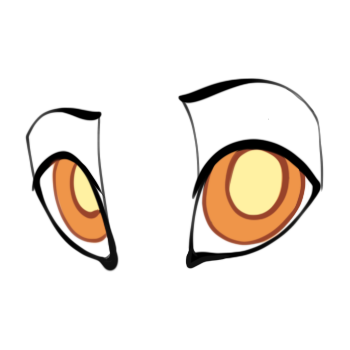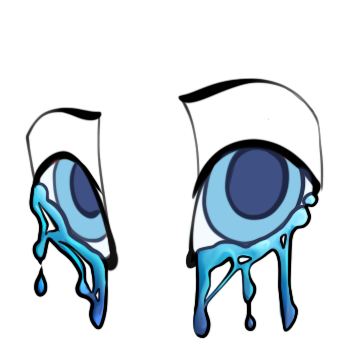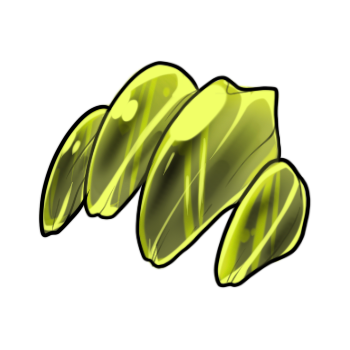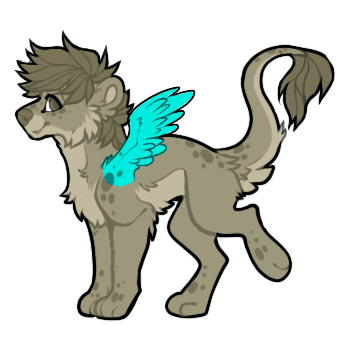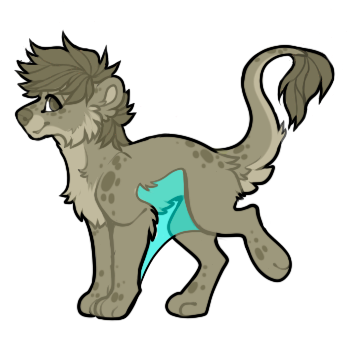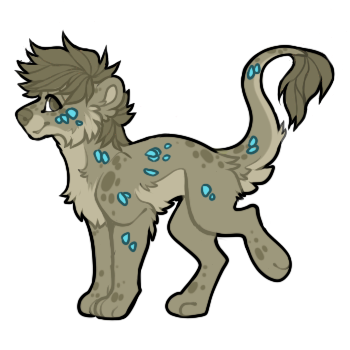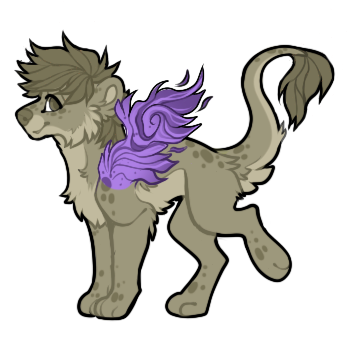Kiamara Traits
Due to the inturos' meddling in genealogy and DNA Splicing, Kiamaras are not from any particularly natural evolutionary lines. This species predominantly has DNA relating to Canines, Felines, Monotremata (exact family unknown), and Inturos. Most Kiamaras tend to look either more akin to a wolf or a lion depending on which DNA is more prevalent - the exact pattern to whether a Kiamara will grow up to look more like a wolf or a lion seems to be unknown and more dependent on environmental factors rather than biological ones. Most Inturos would use Trait Stones in order to apply specific traits to a 'Mara as the species was used more as an aesthetic companion, able to be genetically altered to obtain the look their owner wanted. Now, Kiamaras tend to use any leftover Trait Stones to alter their own appearance for either the same aesthetic reasons or for a biological advantage.
Standard Traits:

Standard Traits tend to be among the more common edits shared amongst Kiamaras, with them not needing a trait stone to be implemented. These traits are able to be freely added to your Kiamara, should you wish to have them!
Spot Traits
Every Kiamara has spots, with most having 10 or more present on their body and more growing throughout their life. This was an aesthetic that the Inturos found admirable, with Kias having specific spot clusters on their body. Since the Inturos' disappearance, these spot clusters have slowly begun disappearing, the spots becoming more sporadic and in less quantity. However, some Kiamaras have less than 11 total spots on them, having only a few present as Kits and not obtaining anymore throughout adult and elder-hood.
Body Types
Not only have environmental factors helped change the way Kiamaras present themselves, but so have biological ones. Aside from their build, scars, or ailments, different Kias have different features that effect their body as a whole. There are even talks of a mythical 'Super Noodle' body type that is yet to be seen amongst Kia-Kind.
Fur Types
Whilst the majority of Kiamaras have a fur type similar to a canine's Combination coat, you'll also find Kias with longer, shorter, hairless, or even a different texture. There are also whispers of mythical fur types where the Kiamara doesn't even have fur but instead is covered in scales.
Hair Traits
The vast majority of Kiamaras have hair on the top of their head and the tip of the tail, with a fair few also sporting a mane on the back of their necks. This hair was purely added to the Kiamaras as an aesthetic choice. This hair does not usually grow below the Kiamara's brow, however, there are quite a few Kias with genetics that allow for the hair to grow longer. This was due to a genetic mutation that had rapidly become popular during the Inturos' reign, which is why you'll see a fair amount of long-haired Kiamaras.
Tail Traits
The standard Kiamara has an elongated lion's tail that they use to show emotions as a canine would. These tails usually can be seen with a fur tuft at the end. In Inturos drawings, this tail was sometimes used as a powerful defence, with sharp objects being woven into the fur by their owner in case they needed protection, or to be used as accessories.
Horn Traits
Horns are usually seen on a Kiamara, though a Kiamara does not need them. It is thought that, like hair, it was simply an aesthetic choice by the Inturos to give to their Kias, or to be used as a defence for their owners. Now, horns are just for aesthetics, with it being one of the most common mutation types to occur within the species with larger horns being rarer than smaller ones.
Horns also have three separate categories to consider: Type, Placement, and Size.
Ear Traits
Whilst it is common knowledge that Kiamaras have ears, due to the mix of DNA Kiamaras can have all sorts of ears. Some had their ears specifically modified by the Inturos depending on location or for their usage for their owners. Whether it's to do with the flexibility of the cartilage giving them flopped ears or even the size; there's a lot to find ear-wise within the species.
Eye Traits
Beauty is in the eye of the beholder, and none believed this quite like the Inturos. In scriptures and old texts, it is said that a simple look into their eyes could control another into doing disastrous things, all due to their beauty. Eye colour and type were once tied to the Inturos, with Kiamaras having the same eyes as their owner to show their familial bond as a companion.
Face Modifications
With the DNA of all sorts of fauna in their own genetic memory, there's a vast variety of different Muzzle and Mouth types found within Kiamaras. Some of these, like longer-snouted Kias, were bred for working 'Maras and those with larger teeth were modified for hunting.
Paw Traits
Whilst many may see small things such as Claws and Paws to be insignificant and overlooked, there's quite a lot of variety in Kiamaras. Many Kias either have hard claws that are always on show, or sharp, retractable ones. Even the paw pads on some are different from others.
Body Modifications
Along the way, some Inturos became a bit too ambitious with the different types of modifications they could add to their Kiamaras, which led to a vast variety of modifications that can still mutate within the species. Some Kiamaras also have things out of their control happen to them that permanently change them, for example losing a limb, becoming blind, or obtaining scars.
Seasonal Traits
Some traits in Solaria can completely change how a Dromedairy or Kiamara look. These traits can only be found during certain times of the year, by obtaining them in events, specific quests, or breeding. These traits usually consist of a various amount of other traits combined into one, overwriting traits currently present on the character. During the times the individual trait can be found in the ARPG, these traits are guaranteed to pass to offspring. When out of season, these traits are considered 'Rare' regarding how often they pass. Both Dromedairy and Kiamaras can only have 1 seasonal trait and must have their current one removed if they wish to have another.

